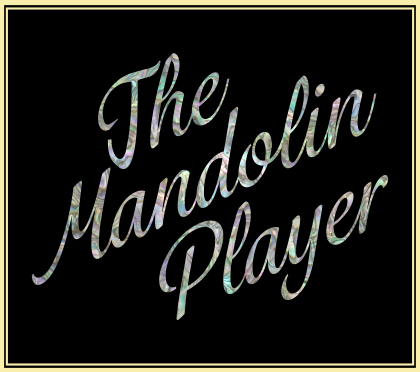Don Julin
Mandolin Exercises for Dummies
John Wiley & Sons, Ltd., 2014
Book Review by Hermon Joyner
Mandolin Exercises for Dummies is Don Julin’s followup book to his bestselling Mandolin for Dummies. While Julin’s first book was intended as a general introduction to the mandolin, Mandolin Exercises for Dummies fulfills an entirely different function. It sets out to provide the basis for a personal practice regime for the working mandolinist. Julin sets out to provide the technical base for playing the mandolin and at the same time, he builds in a multilayer approach to the exercises that allows the player and reader to go as deeply into the technique as they want to go. The idea is that as you progress, you can go deeper into the exercises to find greater challenges. Each exercise module or chapter is made up of three elements that Julin thinks are the key to correct and superior mandolin technique: left-hand technique, right-hand technique, and fretboard knowledge.
Take for instance, his Chapter 3 on Mastering Major Scales. First, Julin presents four closed-position scale patterns and applies them to all the major scales; working on similar ideas that Ted Eschilman has done with his concept of the Four Finger Closed Position (FFcP) and his book, Getting Into Jazz Mandolin. Then Julin takes the major scales and presents them in open-position patterns up to the 7th fret. Many players, especially beginners, are more comfortable playing in first position, so Julin is to be applauded for including this approach. And finally, according to Julin, if you are “bold” you can try playing each of the major scales on one string pair. Julin says that this is one of the best ways to discover the upper ranges of the fretboard.
The book is divided into five parts, which are then subdivided in into chapters. Part I is two chapters on preparing yourself for practice, like warming up the right and left hands. Part II deals with practicing scales and includes four chapters on major, minor, pentatonic, chromatic scales, and fretboard position shifting. Part III is made up of five chapters and looks at arpeggios in several different forms: major, minor, major seventh, minor seventh, and diminished and augmented arpeggios. Part IV examines chords and studies the use of diatonic harmonies, three-string closed chords, and then applies the idea of chord progressions to improvisation. Part V is made up of two chapters; the first of these showcases ten tunes that allow you to apply the knowledge and techniques of the first four chapters to actual music. The last chapter offers ten tips for increasing your playing speed.
It should be noted that a major part of the book for most players isn’t actually part of the book. Sound files can be downloaded from the publisher’s website for the exercises in the book, so you know what each one is supposed to sound like. Directions for doing this is included in the book. This is a vital step in maximizing these exercises.
I see Mandolin Exercises for Dummies as a key missing element in the published technical repertoire for the mandolin. Most other instruments, particularly the orchestral instruments, have volumes of available technical studies. But folk instruments like the mandolin have been left out of those resources. Most books for the mandolin are aimed at learning songs and tunes, and don’t examine the technical foundation for playing the mandolin. Mandolin Exercises for Dummies corrects this in a practical and efficient manner that is aimed at the working mandolinist. Don Julin has really added a much needed resource for all of us.
Julin sums this book up this way, “If you do this, you’ll be a better mandolin player. That’s how I’ve studied all these years and it really opens up the fingerboard, but it’s not easy. This is more like a workout regimen for a gym. Here are things that are going to be difficult to do, but if you stick with them, you’ll be stronger.” And that says it all. Mandolin Exercises for Dummies is highly recommended for players of all levels.
Contact info: www.amazon.com/Don-Julin; donjulin@charter.net; Don Julin, 2913 Concord Street, Traverse City, MI 49684











